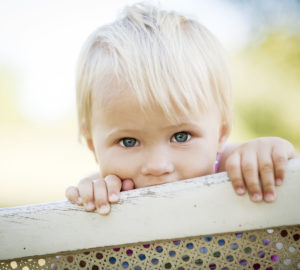There are currently 2 traditions in this directory beginning with the letter E.
Engagement Party
A special party was held to establish a formal contract before family and friends of the intended marriage, known as flouncing. If either changed his mind about the marriage, the other could lay claim to half of his, or her, property. Following a flouncing, the couple could no longer have contact with other suitors.
In China, the betrothal was looked upon as a family obligation. If an engaged man died before the wedding, his intended bride was treated as his widow.
In Finland, the future bride went door-to-door to receive her gifts in a pillowcase. She was accompanied by an elderly married man, carrying an umbrella (for shelter), and was given a drink at each door. This is why today, an umbrella is used as a decoration to symbolize protection.
In China, the betrothal was looked upon as a family obligation. If an engaged man died before the wedding, his intended bride was treated as his widow.
In Finland, the future bride went door-to-door to receive her gifts in a pillowcase. She was accompanied by an elderly married man, carrying an umbrella (for shelter), and was given a drink at each door. This is why today, an umbrella is used as a decoration to symbolize protection.
Engagement Ring
The engagement ring symbolizes the promise of a future together, sealed with the giving and accepting of a ring.
The diamond engagement ring as we know it has been around since the 1400s and was first found in Medieval Italy.
Rings featuring gem stones were popular in the 18th and 19th centuries. Often, the first letter of the stones within the setting spelled out the name of the giver or a word.
Another ring known as the Gimmal Ring, was a three part ring which had two clasped hands on it. During the engagement, one part was worn by the bride, one by the groom, and the third by a witness. It was reunited as the brides wedding ring, on the day of their marriage.
In earlier times, the engagement, or betrothal ring, was a partial payment for the bride and was a pledge of the groom's intentions.
Over time, the diamond emerged as the symbol of betrothal because its clarity and brilliance reflected innocence and purity, while it's strength signaled the hope of an enduring love. All wedding and engagement rings are worn on the third finger of the left hand. The vein in this finger was once believed to go directly to the heart which is closely associated with love.
Until the 15th century, only kings wore diamonds, as a symbol of strength, courage, and invincibility. In India, where it was first discovered, the diamond was valued more for its magic than its beauty and was believed to protect the wearer from fire, snakes, illnesses, thieves, and great evil.
Ancient Greeks believing the fire of a diamond reflected the flame of love, actually thought them to be teardrops from the gods. Ancient Romans also endowed them with romantic powers, believing diamonds to be splinters from falling stars that tipped the arrows of Eros, the god of love. In the Middle Ages diamonds were credited with the power to reunite estranged marriage partners.
Related: Wedding Ring
The diamond engagement ring as we know it has been around since the 1400s and was first found in Medieval Italy.
Rings featuring gem stones were popular in the 18th and 19th centuries. Often, the first letter of the stones within the setting spelled out the name of the giver or a word.
Another ring known as the Gimmal Ring, was a three part ring which had two clasped hands on it. During the engagement, one part was worn by the bride, one by the groom, and the third by a witness. It was reunited as the brides wedding ring, on the day of their marriage.
In earlier times, the engagement, or betrothal ring, was a partial payment for the bride and was a pledge of the groom's intentions.
Over time, the diamond emerged as the symbol of betrothal because its clarity and brilliance reflected innocence and purity, while it's strength signaled the hope of an enduring love. All wedding and engagement rings are worn on the third finger of the left hand. The vein in this finger was once believed to go directly to the heart which is closely associated with love.
Until the 15th century, only kings wore diamonds, as a symbol of strength, courage, and invincibility. In India, where it was first discovered, the diamond was valued more for its magic than its beauty and was believed to protect the wearer from fire, snakes, illnesses, thieves, and great evil.
Ancient Greeks believing the fire of a diamond reflected the flame of love, actually thought them to be teardrops from the gods. Ancient Romans also endowed them with romantic powers, believing diamonds to be splinters from falling stars that tipped the arrows of Eros, the god of love. In the Middle Ages diamonds were credited with the power to reunite estranged marriage partners.
Related: Wedding Ring
previous article
Pick-Up Lines: William Shakespeare
next article







